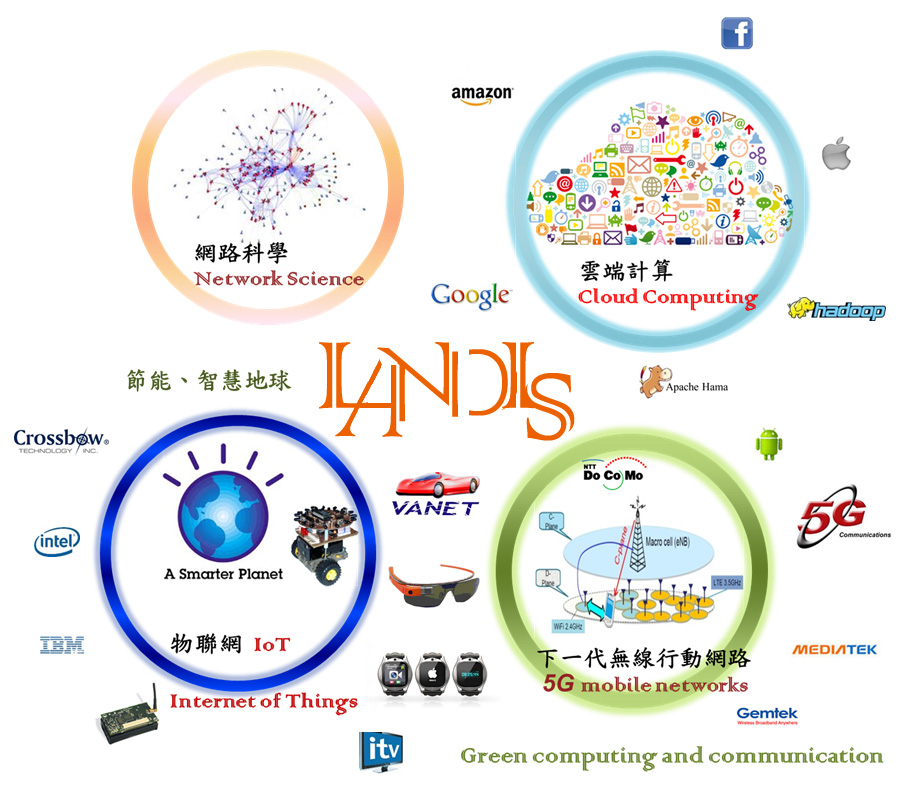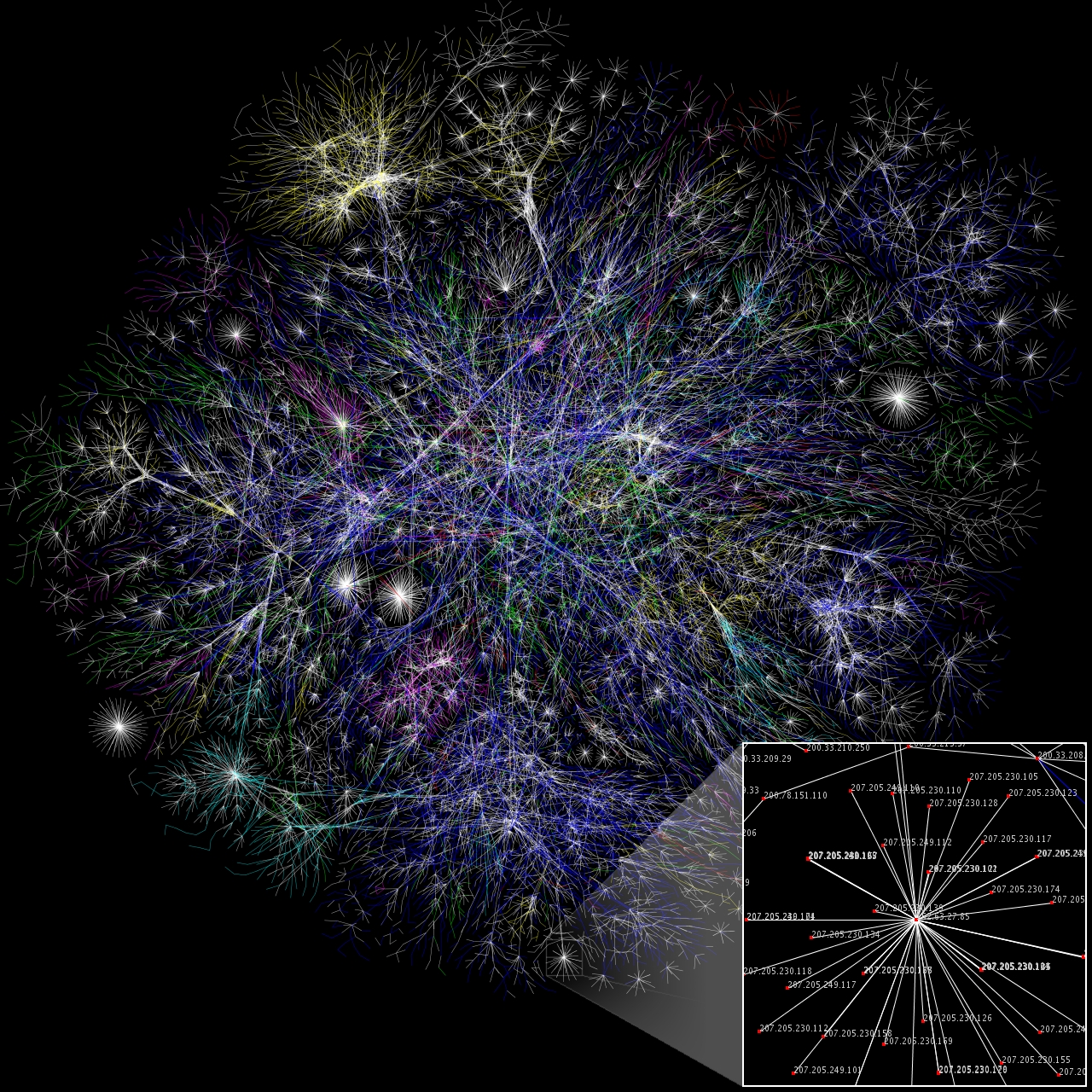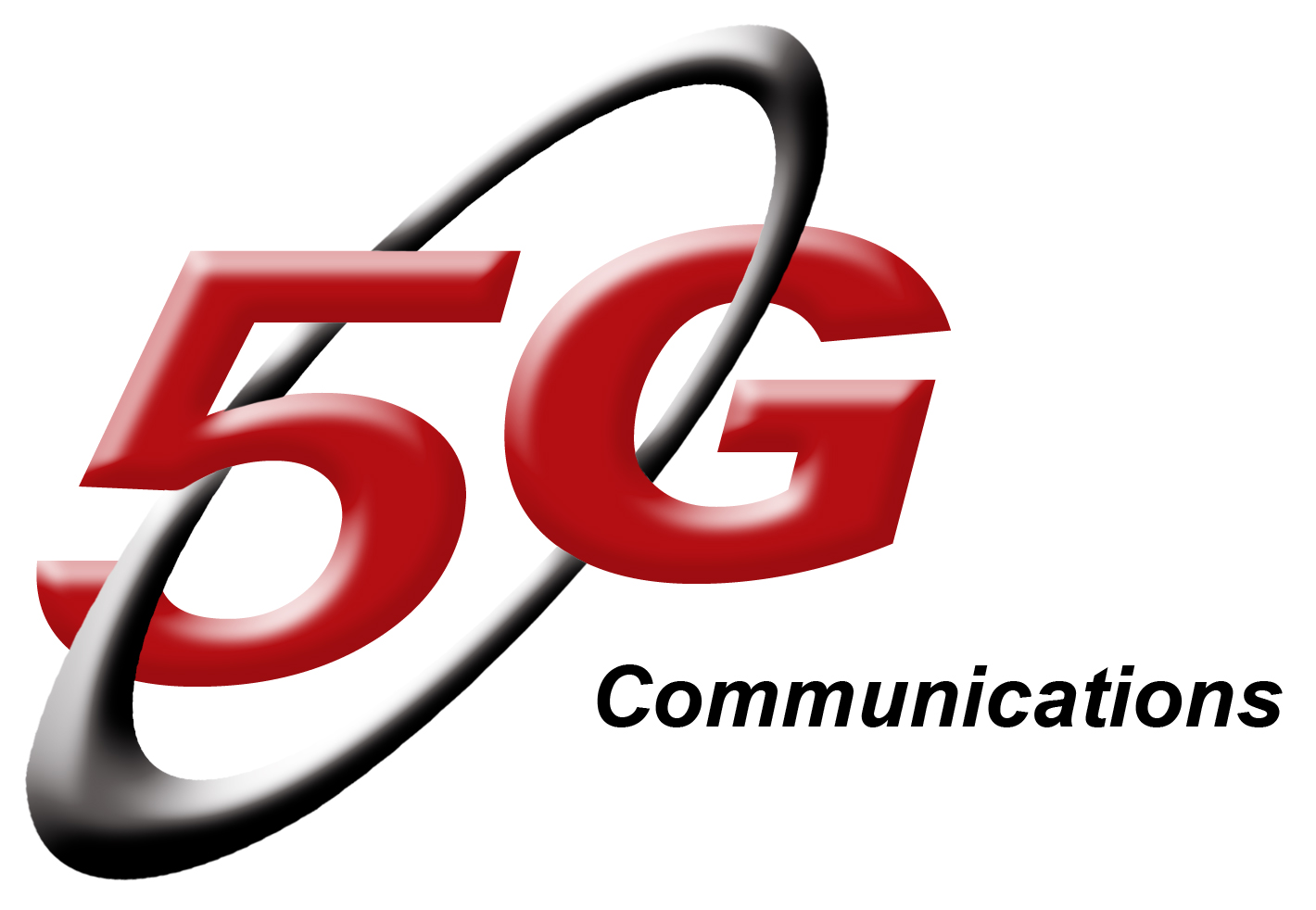Our recent research areas:

Laboratory for Advanced Networks and Distributed Intelligent Systems, or LANDIS, was founded by Dr. Jen-Yeu Chen in 2008. We are now concentrating on Network Science, Cloud Computing, The Internet of Things and 5G Mobile Networks. The details of our studies are listed below:
Network Science:
-

Network science is an interdisciplinary academic field which studies complex networks such as telecommunication networks, computer networks, biological networks, cognitive and semantic networks, and social networks. The field draws on theories and methods including graph theory from mathematics, statistical mechanics from physics, data mining and information visualization from computer science, inferential modeling from statistics, and social structure from sociology. The United States National Research Council defines network science as "the study of network representations of physical, biological, and social phenomena leading to predictive models of these phenomena." -- form wikipedia
- External links:
Intenet of Things:
-

The Internet of Things (IoT) refers to uniquely identifiable objects and their virtual representations in an Internet-like structure. The term Internet of Things was proposed by Kevin Ashton in 1999 though the concept has been discussed since at least 1991. The concept of the Internet of Things first became popular through the Auto-ID Center at MIT and related market analysis publications. Radio-frequency identification (RFID) was seen as a prerequisite for the Internet of Things in the early days. If all objects and people in daily life were equipped with identifiers, they could be managed and inventoried by computers. Besides using RFID, the tagging of things may be achieved through such technologies as near field communication, barcodes, QR codes and digital watermarking. -- form wikipedia
- External links:
5G Mobile Networks:
-

5G (5th generation mobile networks or 5th generation wireless systems) denotes the next major phase of mobile telecommunications standards beyond the current 4G/IMT-Advanced standards. 5G is also referred to as beyond 2020 mobile communications technologies. 5G does not describe any particular specification in any official document published by any telecommunication standardization body. -- form wikipedia
- External links:
We also concentrate the areas on the below:
- DIP - Distributed Information Processing:
- Distributed algorithms for Pervasive Computing
- Data aggregation and data fusion
- Network self-organization
- Consensus and synchronization
- Artificial Intelligence (multi-agent system)
- Network learning (multi-agent system)
- ANT - Advanced Networking Technology:
- Wireless sensor network
- Ad hoc Network
- Video over emerging (wireless/mobile ) networks
- IPTV and multicasting
- Network coding
- Cross layer optimal design
- AAA - Advanced Algorithms & Analysis:
- Randomized algorithms
- Probabilistic method
- Stochastic hybrid system for analytical modeling
-
Related Links of Our Researches:
- Autonomous Networks Research Group - USC
- Wireless Sensor Network Center - NTU
- Laboratory for Information and Decision Systems - MIT
- Project of Sensor Web
- Group of Sensors and Devices
- Group of Networked Embedded Computing
- Group of Distributed Systems - Redmond
- Group of Networking Research
- Group of Machine Learning and Perception
